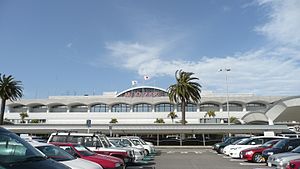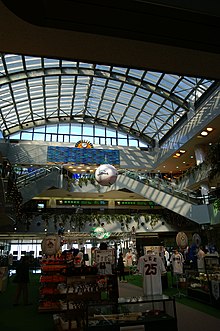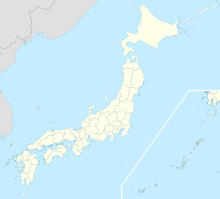Miyazaki Airport 宮崎空港 Miyazaki Kūkō | |||||||||||
|---|---|---|---|---|---|---|---|---|---|---|---|
 | |||||||||||
| Summary | |||||||||||
| Airport type | Public | ||||||||||
| Operator | Ministry of Land, Infrastructure, Transport and Tourism | ||||||||||
| Serves | Miyazaki Prefecture | ||||||||||
| Elevation AMSL | 19 ft / 6 m | ||||||||||
| Coordinates | 31°52′38″N 131°26′55″E / 31.87722°N 131.44861°E | ||||||||||
| Map | |||||||||||
| Runways | |||||||||||
| |||||||||||
| Statistics (2015) | |||||||||||
| |||||||||||
Source: Japanese Ministry of Land, Infrastructure, Transport and Tourism[1] | |||||||||||

Miyazaki Airport (宮崎空港, Miyazaki Kūkō) (IATA: KMI, ICAO: RJFM), also known as Miyazaki Bougainvillea Airport, is an international airport located 3.2 km (2.0 mi) south southeast[2] of Miyazaki, a city in the Miyazaki Prefecture of Japan.
The second floor has the head office of Solaseed Air.[3]

